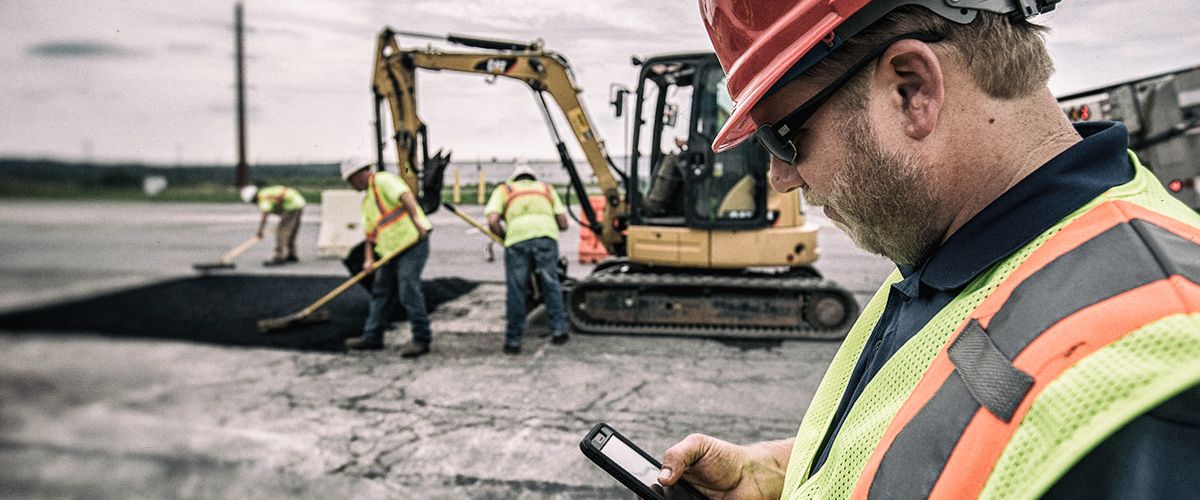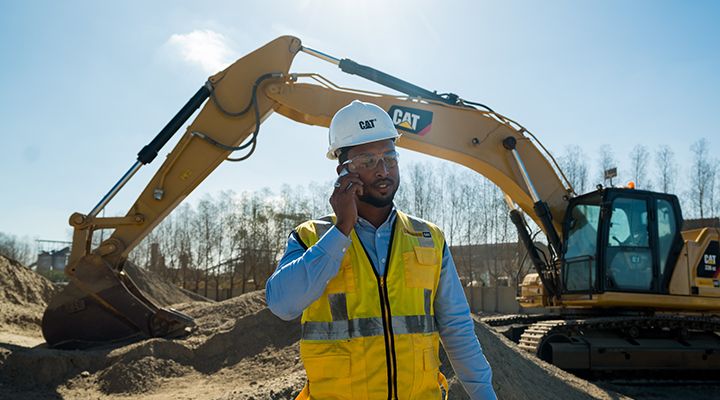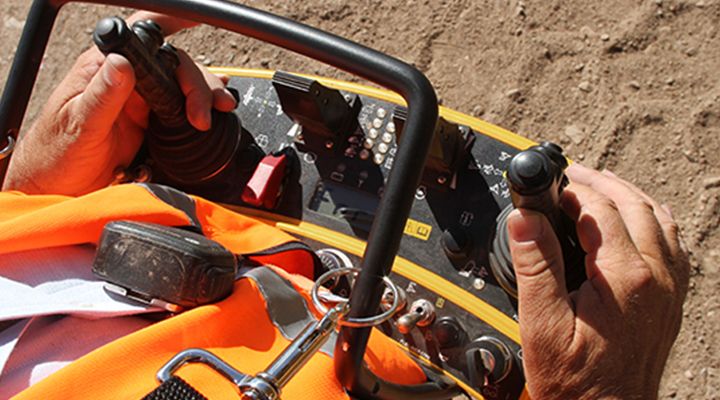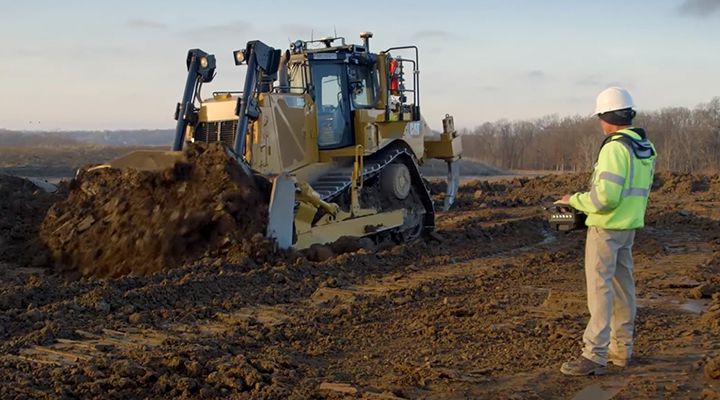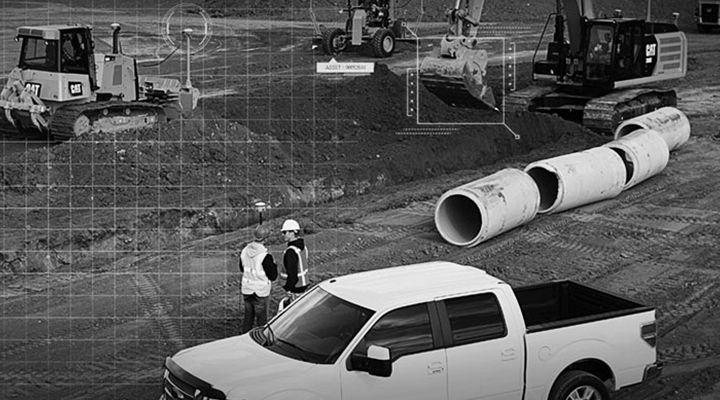If you already have an existing account with another Cat App, you can use the same account to sign in here.
One Account. All of Cat.
Your Caterpillar account is the single account you use to log in to select services and applications we offer. Shop for parts and machines online, manage your fleet, go mobile, and more.
Account Information
Site Settings
Security
Cellular vs. Satellite Communications:
What‘s The Difference?
Making the move to a connected fleet? There are lots of decisions ahead, not the least of which is how you’ll transmit data from the place it’s captured—a machine or other asset—to a place where you can use it—a desktop in the office or a mobile device in the field.
Normally machine data travels through one of two channels: a cellular network or a satellite system. You choose the channel upfront as it affects the type of hardware that will be installed on or built into your assets. Your equipment dealer will help you make the decision, but here are a few things to know before you start the discussion.
HOW DOES IT WORK?
Cellular communications technologies send and receive data through land-based towers. Each tower forms a “cell” which is the area covered by its transmitters. A group of towers is referred to as a “cellular network.” As your machine works, it sends data through the closest tower in the network.
Satellite communications technologies transmit data through satellites orbiting the Earth. Machine data flows directly to the orbiting satellite which sends a signal to the nearest land-based station which communicates to the receiving device.
WHICH OFFERS BETTER COVERAGE?
Satellite systems offer broader coverage than cell networks. Each cell tower has a relatively short range, so it takes many towers to create a big network. But constructing a large number of towers can be costly and difficult—even impossible in remote areas. In contrast, satellite beams cover vast areas and no towers are required, so coverage extends to the hardest-to-reach locations.
WHICH COSTS MORE?
The cost of renting or buying space on a satellite is higher than the cost of using a cellular network. That’s because satellites are more expensive to build, place in orbit and maintain. Satellite costs are trending down though, making this option more affordable than it was in the past.
CAN I USE BOTH?
In some circumstances, it’s possible for a machine to communicate through both a cellular network and a satellite system. However, it must be equipped with what’s known as a “dual-mode” tracking and monitoring technology, which, as the name implies, enables communication through both types of channels.
Differences At A Glance
Cellular |
Satellite |
|
|---|---|---|
Data Transmission |
Through land-based cell towers |
Through Earth-orbiting satellites |
| Coverage | More potential for gaps | Fewer gaps |
| Use in Remote Locations | Can be difficult, even impossible | Usually available in any location |
Affordability |
Less expensive than satellite | More expensive than cellular |
Reliablity |
May experience interruptions as machine moves through network | May experience delays due to long-distance data transfer or changes in weather |
Disaster risk |
More vulnerable | Less vulnerable |
ASK FOR ADVICE
Before you make big decisions about connectivity, meet with a provider who understands your business and can help you plan for success. Together, you’ll look at factors such as:
- Business goals. How will you use data to improve productivity and cut costs?
- Existing assets. What kind of tracking devices are already available, but possibly not in use, on your current assets?
- New hardware required. Can the devices you’re considering withstand the construction environment?
- Connectivity potential. Can you link all assets from all manufacturers?
- Cell coverage. What’s the quality and availability of the cell network in locations where you work?
- Satellite communication. Is it required?
- Budget issues. What can you spend? When will you see a payback?
- Ownership and security of data. Who does the data belong to and who can access it?
- Long-term plan. Is there a plan for growth and is the technology scalable?
Whether you end up with cell- or satellite-based technology—or even a dual-mode solution—the data you’ll be able to capture and use will help you run a safe, efficient and profitable business.
RELATED ARTICLES
You’re here to get ideas to grow your business. Read on for machine insights and expert tips and tricks to get more out of every job.
-
Ask the Expert
Answers on fuel efficiency from an expert - Jason Hurdis, GCI Global Market professional.
Learn More -
Machine Control & Automation Can Add To Your Bottom Line
Technologies that enhance machine performance can add to the bottom line.
Learn More -
Automation & Autonomy: What's the Difference?
These words get used interchangeably, creating confusion. To improve consistency, we've defined these terms.
Learn More -
Productivity - More Efficiency. Better Results.
Cat® Technologies gives you the accuracy, consistency and productivity you want.
Learn More

